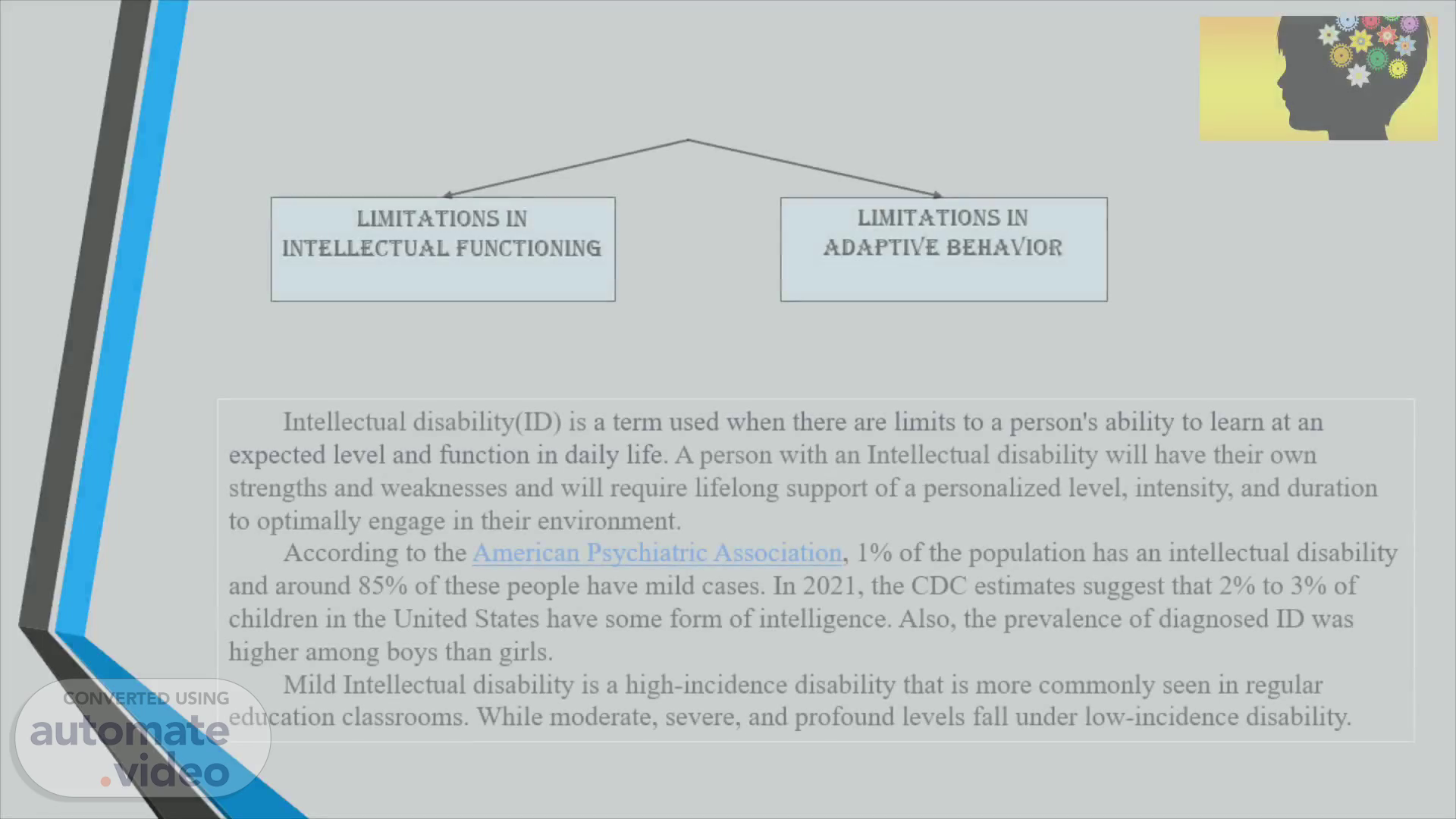
Page 1 (0s)
[Audio] Intellectual disability(ID) is a term used when there are limits to a person's ability to learn at an expected level and function in daily life. A person with an Intellectual disability will have their own strengths and weaknesses and will require lifelong support of a personalized level, intensity, and duration to optimally engage in their environment. According to the American Psychiatric Association, 1% of the population has an intellectual disability and around 85% of these people have mild cases. Also, the prevalence of diagnosed ID was higher among boys than girls. Mild Intellectual disability is a high-incidence disability that is more commonly seen in regular education classrooms. While moderate, severe, and profound levels fall under low-incidence disability..
Page 2 (53s)
[Audio] The diagnosis of an intellectual disability is typically made through a test of intelligence or cognition, often assessed by the range of scores on an Intelligence Quotient (IQ) test. The Intellectual functioning and adaptive functioning measured are considered for the diagnosis. The most common causes of Intellectual Disability are Genetic conditions, problems during and while birth, and health problems. The symptoms of intellectual disability will typically start in early childhood and in some cases, signs of physical issues include unusually large or small heads, abnormalities with their hands or feet, poor muscle coordination, and problem with speaking. Early intervention is the key to focusing on developmental disability or developmental delays. Health problems may include seizures, vision problems, hearing problems, mental disorders, anxiety, and hyperactivity..
Page 3 (1m 50s)
[Audio] A person with Intellectual Disability commonly possesses these social/behavioral issues These behavioral problems among persons with ID increase the likelihood of the occurrence of mental illness, aggression, impulsivity, and violence that might lead to injury..
Page 4 (2m 14s)
[Audio] Intellectual Disability causes the mental ability to affect two functioning Intellectual functioning includes thinking, learning, reasoning, and problem-solving Adaptive functioning includes everyday social, conceptual, and practical skills Specific teaching strategies and educational considerations and modification techniques are the key to teaching students with disability. The school division provides an Individualized Education Program to meet the unique need of Special education students This is a program developed to ensure that a child with an identified disability receives specialized instruction and related services..
Page 5 (2m 58s)
[Audio] Special Education Services such as Individualized Education Programs, Speech Therapy, Occupational therapy, Physical therapy, and Behavioral intervention plan are provided by the educational organization. Students with a disability receive these services in the Least Restrictive Environment. Special education teachers require exceptional qualities to succeed in the classroom. The essential skills are the ability to adapt, compassion, flexibility to change instruction based on the unique need of each student, patience, excellent listening skill, assessment skill, perseverance, collaboration and excellent communication skill..
Page 6 (3m 38s)
[Audio] Below are the references cited for the video. Thank you!!.